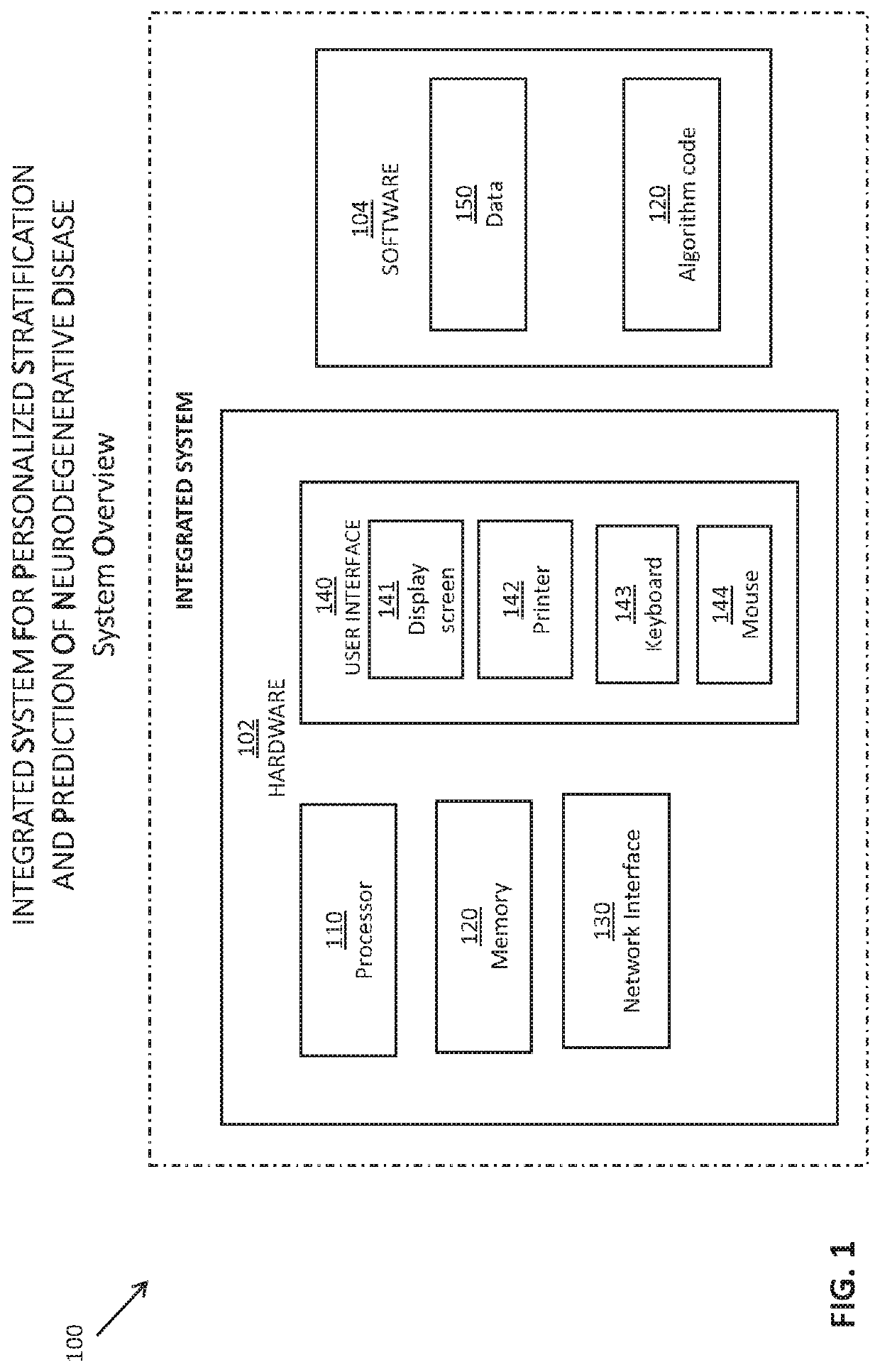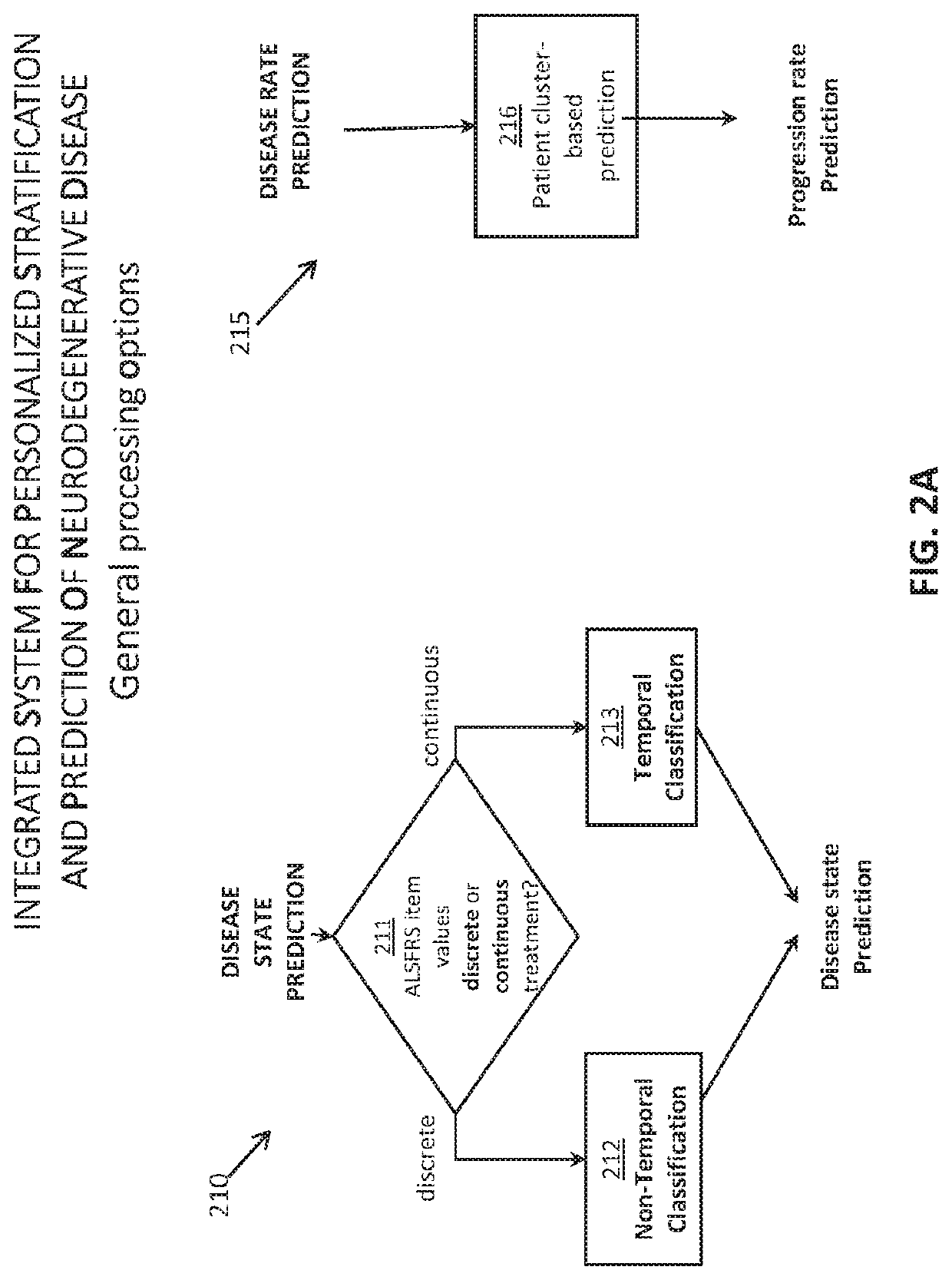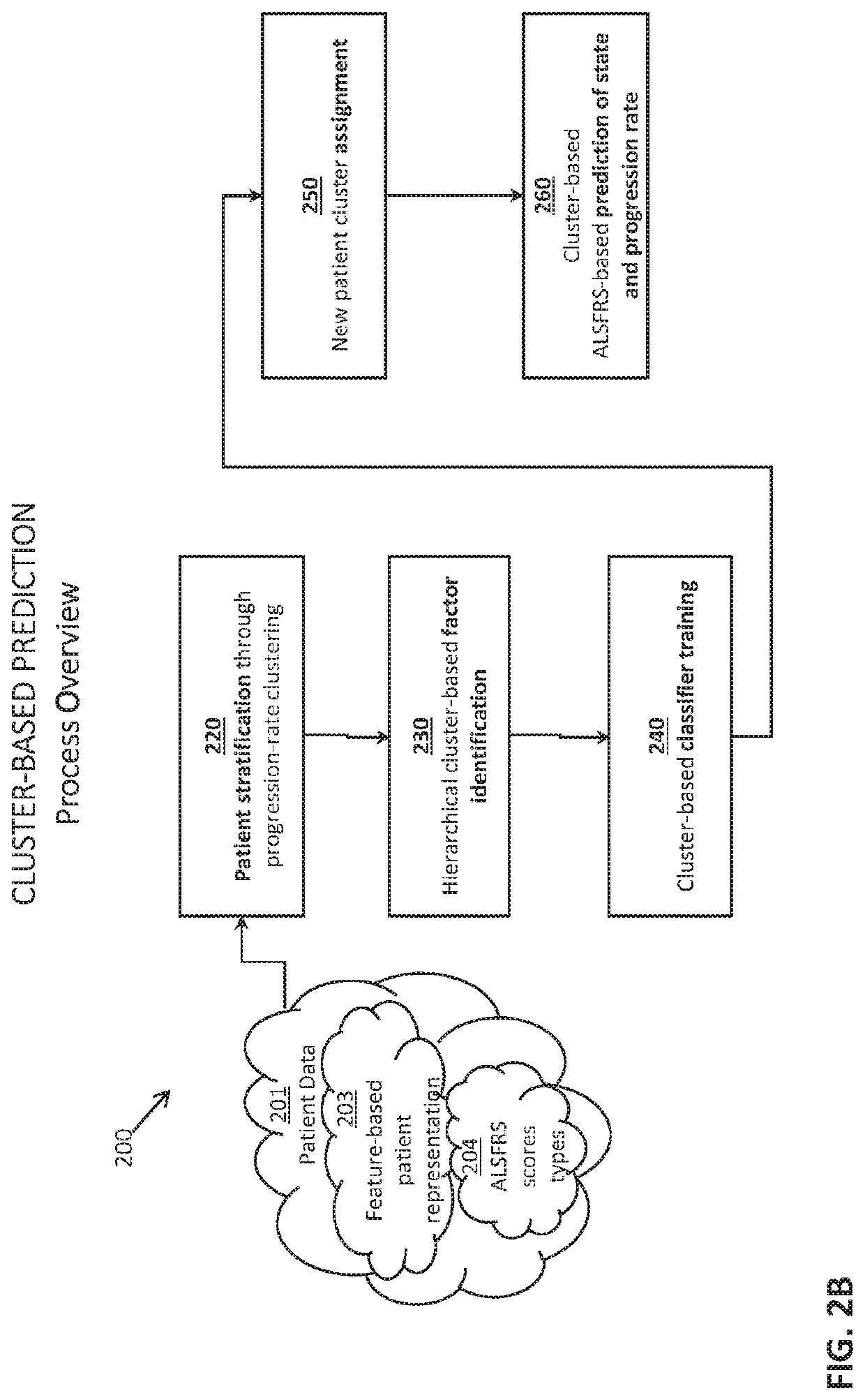Integrated system and method for personalized stratification and prediction of neurodegenerative disease
a neurodegenerative disease and integrated system technology, applied in the field of neurodegenerative diseases, can solve the problems of inability to effectively assess the disease state at a future point in time, lack of significant effective therapies for neurodegenerative diseases, and lack of well-known methods of tracking disease progression
- Summary
- Abstract
- Description
- Claims
- Application Information
AI Technical Summary
Benefits of technology
Problems solved by technology
Method used
Image
Examples
first embodiment
[0070]FIG. 2B depicts a general flow chart of primary steps employed by integrated system 100 to predict disease state and progression, in accordance with a first embodiment based on first identifying patient clusters and then implementing cluster-specific prediction.
[0071]Specifically, clinical patient data 201 is provided and includes feature-based representation 203, generated in preliminary a data processing step to remove outliers and handle missing data from a portion of the usable patient data, and individual ALFSFRS values 204. In step 220 patient data 201 is stratified into characteristic clusters. In step 230, factors for each of the identified clusters are identified. In step 240, a classifier is trained in accordance with characterizing features of each respective patient cluster. In step 250, a new patient is assigned to the patient cluster best matching his progression rate. In step 260, integrated system generates cluster-based ALSFRS item prediction values characteri...
second embodiment
[0134]FIG. 17 depicts a flow chart employed by integrated system 100 configured to implement a prediction-based stratification.
[0135]Specifically, in step 1705 patient data 201 is rendered into static and dynamic feature-based patient representation 203.
[0136]As noted before, the PRO-ACT database includes longitudinal data of ALS patients. The input data for our algorithm (Table 9) include static variables, i.e., variables that do not change through time such as onset site and gender, as well as temporal variables such as forced vital capacity (FVC), and five laboratory test results, which were chosen based on their contribution for prediction. Only patients with no missing data have been used, 2,850 of them were used for training and 1,126 for testing, each with two to thirteen documented visits.
TABLE 9An example for the input data variables for a specific patient. Forsimplicity, units of laboratory test results are not specified.Temporal variablesStatic variablesDaysVisit'sOnsetfr...
PUM
 Login to View More
Login to View More Abstract
Description
Claims
Application Information
 Login to View More
Login to View More - R&D
- Intellectual Property
- Life Sciences
- Materials
- Tech Scout
- Unparalleled Data Quality
- Higher Quality Content
- 60% Fewer Hallucinations
Browse by: Latest US Patents, China's latest patents, Technical Efficacy Thesaurus, Application Domain, Technology Topic, Popular Technical Reports.
© 2025 PatSnap. All rights reserved.Legal|Privacy policy|Modern Slavery Act Transparency Statement|Sitemap|About US| Contact US: help@patsnap.com



